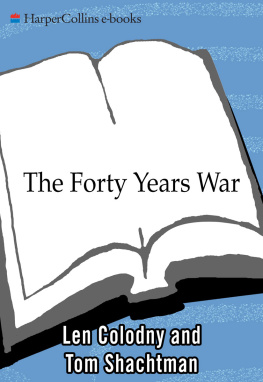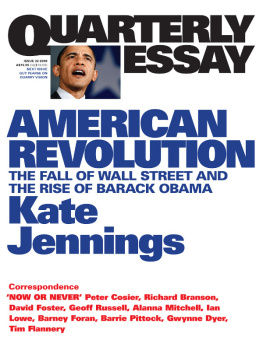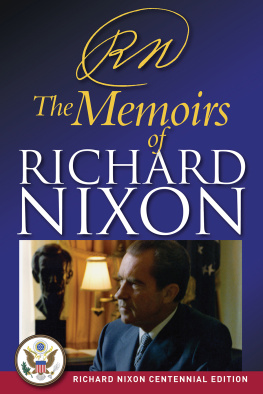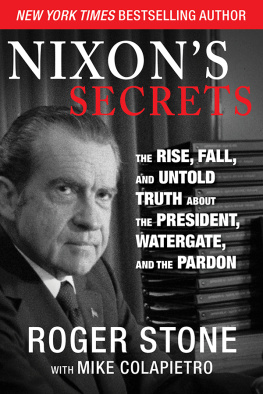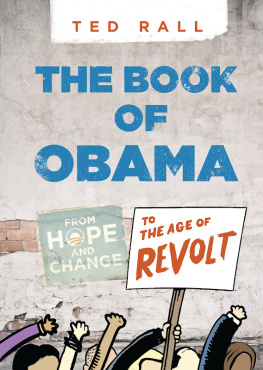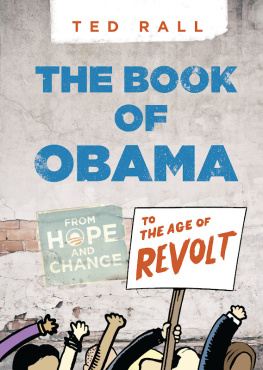Len Colodny - The Forty Years War: The Rise and Fall of the Neocons, from Nixon to Obama
Here you can read online Len Colodny - The Forty Years War: The Rise and Fall of the Neocons, from Nixon to Obama full text of the book (entire story) in english for free. Download pdf and epub, get meaning, cover and reviews about this ebook. year: 2010, publisher: HarperCollins, genre: Science. Description of the work, (preface) as well as reviews are available. Best literature library LitArk.com created for fans of good reading and offers a wide selection of genres:
Romance novel
Science fiction
Adventure
Detective
Science
History
Home and family
Prose
Art
Politics
Computer
Non-fiction
Religion
Business
Children
Humor
Choose a favorite category and find really read worthwhile books. Enjoy immersion in the world of imagination, feel the emotions of the characters or learn something new for yourself, make an fascinating discovery.
- Book:The Forty Years War: The Rise and Fall of the Neocons, from Nixon to Obama
- Author:
- Publisher:HarperCollins
- Genre:
- Year:2010
- Rating:3 / 5
- Favourites:Add to favourites
- Your mark:
- 60
- 1
- 2
- 3
- 4
- 5
The Forty Years War: The Rise and Fall of the Neocons, from Nixon to Obama: summary, description and annotation
We offer to read an annotation, description, summary or preface (depends on what the author of the book "The Forty Years War: The Rise and Fall of the Neocons, from Nixon to Obama" wrote himself). If you haven't found the necessary information about the book — write in the comments, we will try to find it.
Len Colodny: author's other books
Who wrote The Forty Years War: The Rise and Fall of the Neocons, from Nixon to Obama? Find out the surname, the name of the author of the book and a list of all author's works by series.
The Forty Years War: The Rise and Fall of the Neocons, from Nixon to Obama — read online for free the complete book (whole text) full work
Below is the text of the book, divided by pages. System saving the place of the last page read, allows you to conveniently read the book "The Forty Years War: The Rise and Fall of the Neocons, from Nixon to Obama" online for free, without having to search again every time where you left off. Put a bookmark, and you can go to the page where you finished reading at any time.
Font size:
Interval:
Bookmark:
The Rise and Fall of the Neocons, from Nixon to Obama

L EN C OLODNY
To my grandchildren, Samantha Peyton Colodny and Jeremy Len
Hollis, with love, and the hope that they will live in a more peaceful
world. And in memoriam to Howard S. Liebengood, friend, adviser,
and great American.
T OM S HACHTMAN
To Harriet, as always, my inspiration and chief sounding board.
Quarrels would not last so long if the fault were on only one side.
F RANOIS DE LA R OCHEFOUCAULD , 16131680
Is This the Beginning of the End of the Neocons?
Opposing Nixon
The Road to China
Nixons Foreign Policy Dreams
The Anti-Nixon
Sending Signals
Young Men in a Hurry
Actual or Feigned
Cambodia and Echo
Crises Expose Fissures
Approaching the Zenith
Undermining the Presidency
Making Allies into Enemies
A Federal Offense of the Highest Order
Three out of Three, Mr. President
A Meeting of Mind-Sets
Actions and Reactions
The Haig Administration
Three Quick Strikes
Nullifying Nixon
Protecting the Flanks
Endgame
The Triumph of the Neocons
The Post-Nixon Years
A Short Honeymoon
Yielding to the Right
Primary Battles
The Carter Interregnum
The Reagan Evolution
Fits and Starts
The High Tide of Anti-Communism, and After
Not Going to Baghdad
The PostCold War Dilemma
Full Power
Neocons Versus Clinton
From Candidate to Bush 43
The Neocon Hour of Triumph
The Cheney Regency
Losing Power
Foreign Affairs and the Election of 2008
T he real war, warned Walt Whitman, will never get in the books. He was tolling historys neglect, or evasion, of the infernal background and bleak interiors of the American Civil War. As usual, the poet was right about his countrymen. It took more than a century for what he called surface courtesies in the hagiography of authors North and South to yield to the revelation of more authentic, inglorious reality.
Whitmans omen obviously applied to much of our past, and nowhere more crucially than in the stunted writing about recent American foreign policy. We may read a growing literature in praise or blame for what the United States has done in the world over the past four decades, but still lethally little of the people and politics who are the essence of that history and its grim hold on the present. Getting the infernal background and interiors of policy makers into a book, The Forty Years War is an incomparable contribution to our recent history. Whitman would smile.
With meticulous research and dauntless investigative journalism, Len Colodny and Tom Shachtman not only rewrite much of the record since the 1970s but disclose decisive portions of it for the first time. The book opens with a masterful perspective on the fateful presidency of a Richard Nixon who still shapes our world. Continuing Colodnys groundbreaking work with Robert Gettlin in Silent Coup , the authors offer a further revision of what they call the toxic mix of fact, myth, and distortions in the conventional view of the Watergate scandal, and a stunning revelation of how much Nixons historic fall traced to his statesmanship as well as his criminalityhow this deeply flawed yet visionary president was both a casus belli and early casualty of the Forty Years War.
The further treasure in these pages is what the authors excavate of more recent history, buried until now in unreleased archives and prevailing clich. The post-Nixon years marked the more dramatic rise, furtive and open, of the neoconservativesknown by the aptly crude abbreviation neoconswho are the now fearsome, now ludicrous belligerents in the books four-decade conflict, though the often-unnamed forces behind them are no less decisive. In many respects, crucial history is probed here in depth for the first time: the lasting significance of Gerald Fords brief but compromised, compromising presidency, the inner battles of Jimmy Carters administration against the massive war chest and confected credentials of unprecedented reaction, the startlingly mixed record of conservative icon Ronald Reagan in the Oval Office, and the dozen locust years in the presidencies of George Herbert Walker Bush and Bill Clinton, in which Washington lost the chance to redefine postcold war foreign policy by the best of past statesmanship, and so opened the way to neocons with the worst of it.
Colodny and Shachtman are surely right that the latter Reagan era, and the sequel of the elder George Bush, were marked by a very Nixonian pragmatism. Yet it was moderation without vision, at a revolutionary moment when vision was indispensable. The two Clinton terms of shallow policy and characterless leadership that followed are a bleak reminder of how much the ensuing neocon triumph owed to the failure, default, and outright complicity of the neo-liberal Democratic establishment. As the authors document, the wrack and ruin of the Forty Years Warfrom blind collusions in the Watergate crisis to the post-9/11 enabling acts of George W. Bush by a Democratic Congresshave been a bipartisan disaster.
The ultimate gift of this book is its cast of characters. Whether these names are famous, forgotten, or simply never noticed, we live with the legacy of them all. At the heart of the dramaat the starting point of the war, at every action, and in symbolic terms at its present stage, well after his deathstands arguably the most important unknown figure in recent American history, the redoubtable Fritz G. A. Kraemer. The bureaucratic-political as well as ideological godfather of the neocons, Kraemer, with his fascinating story, must be left to the coming pages. As with so much the authors reveal, it is enough to say that it is all richly symbolic. The hold of Old World tribalism over Washingtons foreign policy through the second half of the twentieth century and the start of the twenty-first is one of the great unacknowledged scandals in American governance. That the United States approached the world of 9/11, and its tumultuous aftermath, in bondage to the mentality of an expatriate European official educated in the 1920sa bureaucrat steeped in the stereotypes of a vanished worldepitomizes our failure as a nation to conduct ourselves knowledgeably and responsibly in world affairs.
The long-neglected interiors of the neocon world shown in this book hardly add up to the black magic by which diffident politicians, as well as most of the media and public, seem to believe policy is made. Whitmans infernal background is all herethe banality, expedience, myths, relentless shallowness, the feet-of-clay fiction of a global-affairs elite on either side of the aisle. Their noses pressed firmly to the windows of a foreign policy establishment of suitably anticommunist Democrats and a rapidly dwindling remnant of moderate Republicans (even dilettantes have standards, after all), the neocon wannabes soon gave up. Led by touts and pamphleteers, they played shrewdly to the post-dtente arms control anxiety of military-industrial giants, as well as to the old fears and felt exclusion of corporate and individual wealth, to build their own mimicking foundations, institutes, and centers through the 1970s and 1980s. These resulting think tanksor think pits, as author and editor Sam Smith has called themwere remarkable exercises in the sociology of knowledge without knowledge, producing for their hundreds of millions in supposedly public-interest donations a flood of Kraemeresque indoctrination and propagandayet not a single enduring work of scholarship about either the outside world or the history of American diplomacy.
Font size:
Interval:
Bookmark:
Similar books «The Forty Years War: The Rise and Fall of the Neocons, from Nixon to Obama»
Look at similar books to The Forty Years War: The Rise and Fall of the Neocons, from Nixon to Obama. We have selected literature similar in name and meaning in the hope of providing readers with more options to find new, interesting, not yet read works.
Discussion, reviews of the book The Forty Years War: The Rise and Fall of the Neocons, from Nixon to Obama and just readers' own opinions. Leave your comments, write what you think about the work, its meaning or the main characters. Specify what exactly you liked and what you didn't like, and why you think so.

